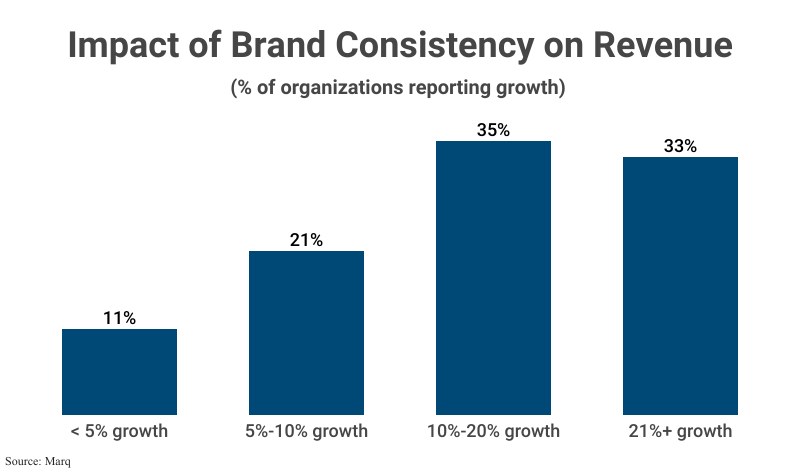
Imagine encountering your favorite brand, only to see its logo in different colors across platforms or its tone vary wildly from one message to another. It feels disjointed, even unsettling — almost like meeting someone with a different personality each time. Consistency is more than just a detail in branding; it’s the foundation of trust and recognition. A business style guide serves as the roadmap to maintaining a unified, professional identity across every interaction, whether it’s through digital content, social media, or internal communications.
By defining everything from logos and colors to tone and voice, a style guide ensures that every piece of content aligns with the brand’s core identity. It’s a simple yet powerful tool, helping companies look polished, stay on message, and ultimately build stronger relationships with their audience.
The Role of a Business Style Guide
A business style guide acts as a playbook for maintaining a cohesive brand image across every channel and touchpoint. It aligns everyone within the organization, from designers and marketers to sales teams, ensuring every interaction reflects the brand’s true essence.
Defining a Style Guide
A business style guide is a comprehensive document that provides clear guidelines on how a brand’s visual and verbal elements should appear in various contexts. By standardizing everything from logo usage to writing tone, it simplifies decisions and promotes consistency, which is crucial for audience recognition and trust.
Why It’s Essential
Consistency is one of the most powerful elements in branding. When a business presents itself reliably and professionally across channels, it becomes recognizable and credible to its audience. A style guide minimizes the risk of misrepresentation, reinforces a unified message, and ultimately helps businesses cut through the noise.
Consistent branding also has measurable financial benefits. In fact, 35% of organizations report a 10-20% growth in revenue due to consistent brand presentation.
This boost underscores how brand cohesion directly impacts customer trust and long-term business growth, making a business style guide an essential tool for any brand serious about scaling.
Beyond brand recognition, consistency builds trust. When customers see a reliable, familiar brand, they’re more likely to feel secure in their purchasing decisions and more connected to the brand itself. This connection fosters loyalty and elevates a company’s reputation.
Key Components of a Business Style Guide
Creating an effective business style guide means covering both the visual and verbal components that define your brand’s unique personality. Here are some key elements to include:
Visual Elements
-
Logos: Outline primary, secondary, and any alternative versions of the logo, specifying clear guidelines on how and when each can be used. Include rules around spacing, sizing, and placement to ensure consistency.
-
Color Palette: A defined color scheme helps every piece of content feel like part of a cohesive whole. Specify primary, secondary, and accent colors with corresponding color codes (e.g., HEX, RGB) for accurate reproduction across digital and print.
-
Typography: Define specific fonts for headings, subheadings, and body text. Consistent typography reinforces brand identity, making each piece of communication instantly recognizable.
Voice and Tone
-
Voice: The brand’s voice reflects its personality and values. Is it friendly and conversational, or professional and authoritative? Define a consistent voice that aligns with your audience and brand identity.
-
Tone: While the voice remains consistent, tone may shift depending on context (e.g., social media posts may be more casual, while press releases should be formal). Outline how to adapt the tone for various scenarios, keeping it authentic and true to the brand.
Usage Rules
Establish clear guidelines on the use of brand assets, from the logo to taglines. Include “dos and don’ts” for handling each element, such as spacing requirements, background colors, and instances to avoid. Clear usage rules prevent unintentional brand missteps, maintaining a polished and professional look across platforms.
Steps to Creating an Effective Business Style Guide
Building a comprehensive style guide might seem overwhelming, but breaking it down into manageable steps makes it much more achievable. Here’s a step-by-step approach to creating a business style guide that truly reflects your brand:
1. Identify Core Brand Elements
Start with the basics — define your brand’s mission, values, and target audience. These foundational elements shape how your brand should look and sound, guiding all future decisions in the style guide. Think of this as setting the tone for everything that follows.
2. Document Visual Standards
Detail the visual guidelines that will define your brand’s look. This includes logos, colors, and typography, each with specific guidelines on usage. Specify correct sizing, spacing, color codes, and font combinations to prevent any inconsistencies.
3. Outline Voice and Tone
To make your brand’s personality clear, describe how it should sound in different contexts. Provide examples to guide writers, marketers, and other team members on the tone they should aim for, ensuring every piece of communication feels cohesive and authentic.
4. Include Dos and Don’ts
Add examples of correct and incorrect uses of brand elements. Clear “dos and don’ts” prevent common errors and help new team members quickly learn brand standards. These visual examples save time and clarify expectations, especially for creative teams.
5. Incorporate Real Examples
Real-life examples of the style guide’s elements in use (such as social media posts, website layouts, or marketing materials) can add valuable context. Seeing the style guide come to life in these examples helps the team understand and apply the guidelines effectively.
Implementing and Maintaining Your Style Guide
Creating a style guide is just the beginning; making sure it’s actually used and maintained over time is key to its success. Here’s how to ensure that your style guide remains relevant and accessible:
Educate Your Team
Ensuring that everyone understands the importance of the style guide and knows how to apply it is crucial. Host training sessions to introduce team members to the guide, walking them through its essential elements. Consistency across the team isn’t just about alignment; it’s about fostering trust.
As trust becomes increasingly essential for consumers — more than 7 in 10 say that trusting the brands they buy is more important today than in the past — each team member plays a role in maintaining credibility. Among Gen Z adults, this is even stronger, with 79% saying trust is more important now.
When everyone adheres to the style guide, each interaction with your brand fosters this trust and builds lasting connections.
Make It Accessible
Use digital platforms, such as Lytho’s brand management tools, to make the style guide easy to access, edit, and distribute. When the style guide is available online, it’s simpler for team members to find the latest version and avoid outdated practices.
Regular Updates
As your brand grows and evolves, your style guide should too. Schedule periodic reviews to ensure the guidelines stay aligned with the brand’s current identity and goals. Update any visual or tone elements as necessary to keep the style guide accurate and effective.
Reinforce Brand Identity Today With Lytho
Incorporating a well-crafted business style guide empowers your brand to present a consistent, professional image across all channels. By defining clear guidelines for visual and verbal elements, you create a foundation for cohesive and impactful branding that resonates with your audience.
Discover how Lytho’s brand management tools can help you create, implement, and maintain a cohesive style guide for lasting brand consistency. Schedule a demo with Lytho today to see how our solutions can streamline your brand’s visual and verbal identity across all channels.
Do you want to give yourself and your creative team more room for creative stimulation by automating the boring stuff? Lytho helps you streamline your entire workflow and harmonize all brand collateral under a single, uniform platform. Feel free to reach out to us by scheduling a demo and learning how our creative solutions can boost the effectiveness of your creative projects. We look forward to speaking with you!

Ready to simplify your creative operations and start having a little fun at work again? Schedule time to talk with us.
Let us show you how Lytho’s Creative Operations Platform helps in-house creative and marketing teams do better work, ease the stakeholder experience, and stay on brand.
Schedule a Demo posted by
posted by 

